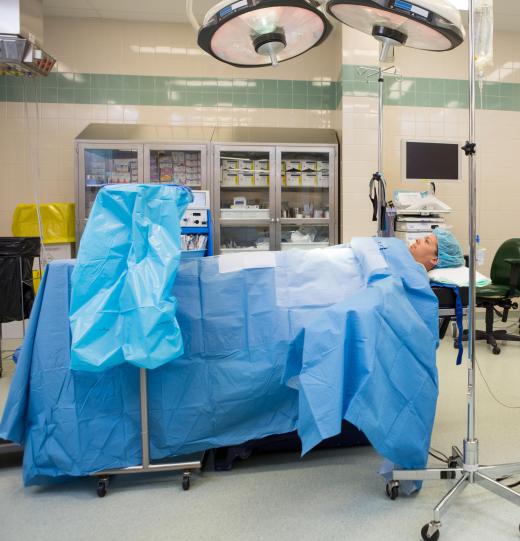A germicidal lamp is a lamp which is designed to damage organisms such as bacteria, viruses, and fungi so that they cannot reproduce. Exposure to a germicidal lamp commonly renders these organisms sterile or may kill them, creating a cleaner environment. These types of lamps are used in a number of different settings, from research facilities to operating rooms. They are available through suppliers of medical equipment.
Germicidal lamps come in low and medium pressure versions. In both cases, they produce light in the UV area of the spectrum. This light breaks down DNA in organisms it comes into contact with, impairing the organisms and sterilizing them. Some germicidal lamps also make ozone, which can be used in water purification or in systems where sterilization is needed in areas where light cannot penetrate.

Germicidal lamps can be used in heating and cooling systems to keep the system free of organisms which could make people sick, and they can also be used as part of an infection control protocol, and in facilities where potentially harmful organisms are present. These lamps can also be used as part of a sterilization procedure. Geologists use them to study fluorescence in samples, as do some mycologists.

There are some cautions to be aware of when using a germicidal lamp. Exposure to UV can cause damage to the skin and eyes, which makes it important to shield such lights to minimize exposure for people in the area where the lamp is used. Posting precautionary signs may also be advised so that people are aware of the danger.
The effectiveness of a germicidal lamp also degrades over time. It is important to keep the lamp clean by following the directions of the manufacturer, and to replace the bulb about once a year, whether or not it has burned out. Some companies sell monitors which can be used to determine whether or not a germicidal lamp is still operating properly. The monitor can be linked to an alarm which alerts someone when the lamp needs to be serviced or inspected.
Using a germicidal lamp is not the only way to control the spread of infection. These lamps are more effective when combined with other techniques, such as the use of filters in air and water systems, wiping down surfaces with disinfectant, and so forth. Combining control methods provides multiple lines of defense, making it harder for microorganisms to gain a foothold where they are not wanted.
Ever since she began contributing to the site several years ago, Mary has embraced the exciting challenge of being a About Mechanics researcher and writer. Mary has a liberal arts degree from Goddard College and spends her free time reading, cooking, and exploring the great outdoors.

